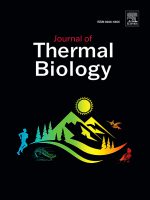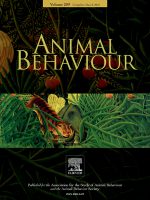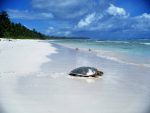Profile
Estimating the total number of individuals of a population, along with breeding success, is vital to understanding the ecosystem role of species and their population dynamics. However, population assessments are difficult to obtain for sea turtles depending on their life stage and due to the nature of their breeding. Sea turtles do not breed annually, are capital breeders and often emerge on remote beaches to nest.
This project followed on from the existing research programme to investigate the ecology of sea turtles nesting across the Chagos Archipelago. Now we can undertake long-term field seasons, the aim is to determine the success of sea turtle nesting and hatchling emergence and investigate how variations in beach zone, seasonality, beach vegetation, and temperature influence their success. I also explored how sites may change under future climate scenarios and how this can influence population dynamics.
New methods and technology helped to facilitate this research. Remote cameras were used to update estimates of nesting populations of sea turtles, and drone footage was used in combination with satellite tracking data to assess patterns of abundance in immature sea turtles in the Chagos Archipelago.
The Chagos Archipelago supports all life stages of turtles and provides a great opportunity to study immature turtles, an understudied life stage, at shallow foraging and development sites. Our research at Turtle Cove in Diego Garcia shows the highest densities of immature hawksbill turtles in the world.
Biography
My Project
Other interests
I am interested in how we can incorporate new methods and technology in combination with traditional methods to refine our findings and create a bigger picture.
I researched the diet of green turtles in the Western Indian Ocean (WIO) and the variation in their diet around the World for my MSc project. Seagrass is a main component of green turtle diet, and I am interested in the role that green turtles play in structuring seagrass ecosystems.
My Publications

Low Growth Rates at High Population Densities in Sea Turtles
Mortimer, J.A., Esteban, N., Laloe, J.-O., Stokes, H.J., Tromp, J.J., Hays, G.C. (2025) Low growth rates at high population densities in sea turtles. Marine Biology.

Assessing the Impacts of Satellite Tagging on Growth of Immature Hawksbill Turtles
Stokes, H.J., Stokes, K.L., Mortimer, J.A., Laloe, J-O., Esteban, N., Hays, G.C. (2024). Assessing the impacts of satellite tagging on growth of immature hawksbill turtles. Methods in Ecology and Evolution.

Empirical Evidence for the Extent of Spatial and Temporal Thermal Variation on Sea Turtle Nesting Beaches
Stokes, H.J., Laloe, J-O., Esteban, N., Hays, G.C. (2024). Empirical evidence for the extent of spatial and temporal thermal variation on sea turtle nesting beaches. Journal of Thermal Biology

Nest Site Selection in Sea Turtles Shows Consistencies Across the Globe in the Face of Climate Change
Stokes, H.J., Esteban, N., Hays, G.C. (2024). Nest site selection in sea turtles shows consistencies across the globe in the face of climate change. Animal Behaviour.

Predation of Sea Turtle Eggs by Rats and Crabs
Stokes, H.J., Esteban, N., Hays, G.C. (2023). Predation of sea turtle eggs by rats and crabs. Marine Biology.



